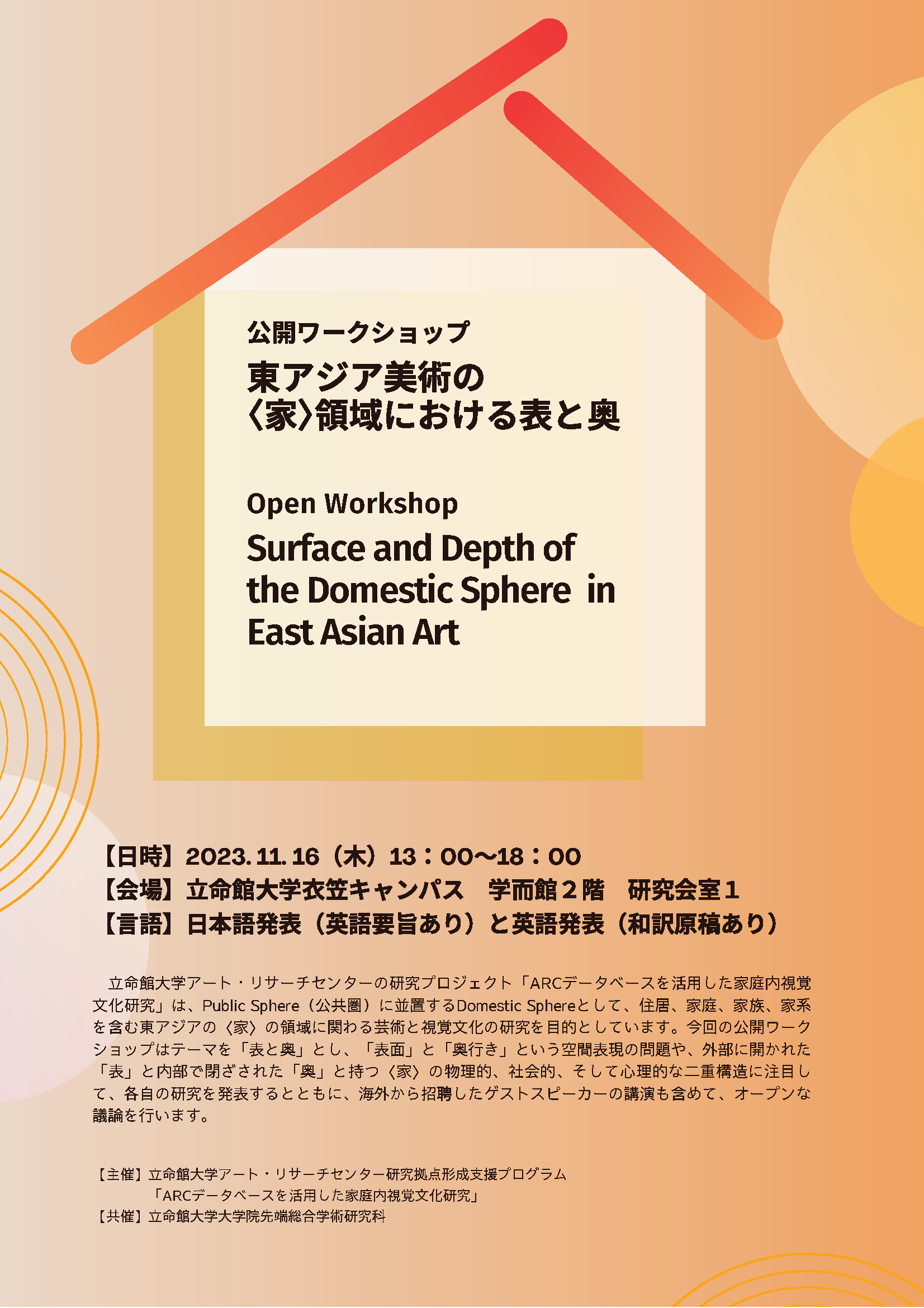-
[イベント情報]December 18, 2023(Mon)
On December 18, 2023, Prof. Soo-chul Kim (Provost, Korea National University of Cultural Heritage) and Prof. Yi Kisung (Dept. of Archaeology, Korea National University of Cultural Heritage) visited the Art Research Center (ARC).
Besides a tour of the ARC building and facilities, discussions and an exchange of opinions on collaboration in digital humanities research and education took place with Prof. Keiji Yano (College of Letters/Deputy Director of the ARC).
[イベント情報]December 1, 2023(Fri)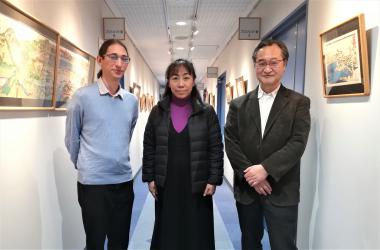
On December 1, 2023, Kazuko Kameda-Madar, Visiting Professor of the Hebrew University of Jerusalem, Israel (HUJI), was at the Art Research Center (ARC) and discussed about collaboration in digital humanities research with Prof. Ryo Akama (College of Letters/Director of the ARC) and Dr. Travis Seifman (Kinugasa Research Organization/Research Manager of the ARC).
[イベント情報]November 20, 2023(Mon)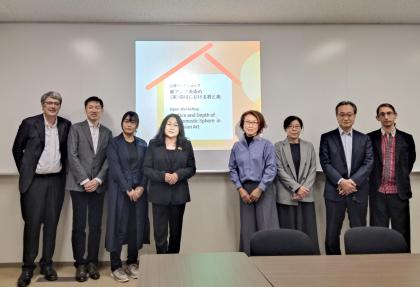
The open workshop "Surface and Depth of the Domestic Sphere in East Asian Art" was held at Ritsumeikan University on November 16, 2023, as part of the Art Research Center research project "Visual Culture Studies in the Domestic Sphere Utilizing the ARC Database" led by ARC faculty member Prof. Yumi Takenaka under the Program for Supporting Research Center Formation.
The project aims to study arts and visual culture in East Asia related to the concept of "Ie," which encompasses housing, households, family, and family genealogy within the "Domestic Sphere," juxtaposed to the "Public Sphere".
The theme of this open workshop was "Omote and Oku," which focuses on "surface and depth" aspects of spatial representations and also addresses issues related to the physical, social, and psychological dual structure of the "Ie," with its outward-facing aspects open to the outside, and inner aspects closed off from it.
In addition to an invited lecture by Professor Emeritus Jeong-hee Lee-Kalisch (Free University of Berlin) and individual research presentations, an open discussion was held.
Organizer: Project of "Visual Culture Studies in the Domestic Sphere Utilizing ARC Database", Program for Supporting Research Center Formation, Art Research Center (ARC), Ritsumeikan UniversityCo-organizer: Graduate School of Core Ethics and Frontier Sciences, Ritsumeikan University
Date & Time: November 16 (Thur), 2023, 13:00-18:00
Venue: Seminar Room 1, Gakujikan Hall 2F, Kinugasa Campus, Ritsumeikan University
Language: Japanese (with English abstract) and English (with Japanese script)"Visual Culture Studies in the Domestic Sphere Utilizing ARC Database"
[イベント情報]November 20, 2023(Mon)On November 20, 2023, Prof. Makoto Goto and Prof. Masakatsu Nagai of the National Institutes for the Humanities (NIHU) visited the Art Research Center (ARC).
Besides a tour of the ARC building and facilities, discussions and an exchange of opinions on collaboration in digital humanities research took place with Prof. Ryo Akama (College of Letters/Director of the ARC) and Prof. Keiji Yano (College of Letters/Deputy Director of the ARC).
The Art Research Center (ARC) is pleased to announce that its academic journal ART RESEARCH vol.24-2 has been released online.
As an academic journal specializing in arts and culture, the purpose of ART RESEARCH is to widely publicize the results of the research projects and activities conducted by the Art Research Center (ARC), Ritsumeikan University, and its partner institutions and collaborative researchers.
Since its establishment in 1998, the Art Research Center (ARC) has been selected for several national grants as a center of excellence for research in culture, art, and information science. In FY2019, the center assumed the role as the International Joint Digital Archiving Center for Japanese Art & Culture (ARC-iJAC) upon its accreditation by the MEXT as an International Joint Usage/Research Center. The ARC is highly regarded as a leading hub for the digital archiving of Japanese art and culture.
Our online journal will be published three times per year, and at the end of the fiscal year, a print booklet compiling all contributions will be distributed.
[イベント情報]November 7, 2023(Tue)On November 7, 2023, Prof. Chih-Ming Chen (Director, Research Center for Chinese Cultural Metaverse in Taiwan, National Chengchi University) and Prof. Shi-Chi Mike Lan (Deputy Director, Research Center for Chinese Cultural Metaverse in Taiwan, National Chengchi University) visited the Art Research Center (ARC).
Besides a tour of the ARC building and facilities, discussions and an exchange of opinions on collaboration in digital humanities research and education took place with Prof. Ryo Akama (College of Letters/Director of the ARC) and Prof. Keiji Yano (College of Letters/Deputy Director of the ARC).
[イベント情報]November 6, 2023(Mon)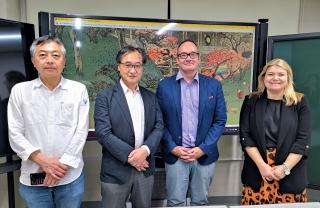
On November 6, 2023, Prof. Graeme Earl (Head of the College of Humanities, SOAS University of London) visited the Art Research Center (ARC).
Besides a tour of the ARC building and facilities, discussions and an exchange of opinions on collaboration in digital humanities research and education took place with Prof. Ryo Akama (College of Letters/Director of the ARC) and Prof. Keiji Yano (College of Letters/Deputy Director of the ARC).
[イベント情報]November 2, 2023(Thu)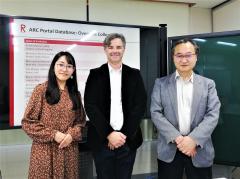
On November 2, 2023, Russell Kelty (Curator, Art Gallery of South Australia) visited the Art Research Center (ARC).
Besides a tour of the ARC building and facilities, discussions and an exchange of opinions on a collaboration in research activities in digital archiving took place with Prof. Ryo Akama (College of Letters/Director of the ARC).
[イベント情報]October 17, 2023(Tue)On October 17, 2023, the Tokyo Shimbun featured the article "デジタル化で今よみがえる往年の歌舞伎ブロマイド" on the Kabuki bromides in the collection of the Shochiku Otani Library which have been released in the ARC Shochiku Otani Library Theater Photos Search and Browsing System.
Digital Archive of Shochiku Otani Library's Collection of Valuable Materials "Theater Photos Search and Browsing System"
■ URL:https://www.dh-jac.net/db/butai-photo/search_sol.phpRelated article>>https://www.arc.ritsumei.ac.jp/e/news/pc/019324.html
[イベント情報]October 15, 2023(Sun)On October 15, 2023, the Nihon Keizai Shimbun (Nikkei) featured the second part of a coverage on the research projects to digitize overseas museum collections, led by Prof. Ryo Akama, Director of the Art Research Center (ARC).


